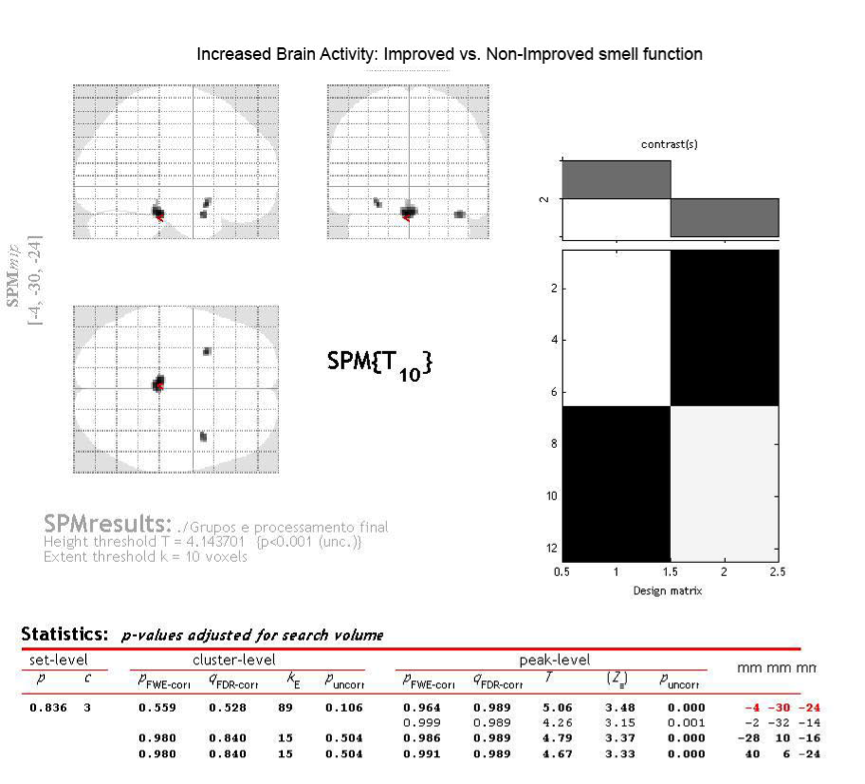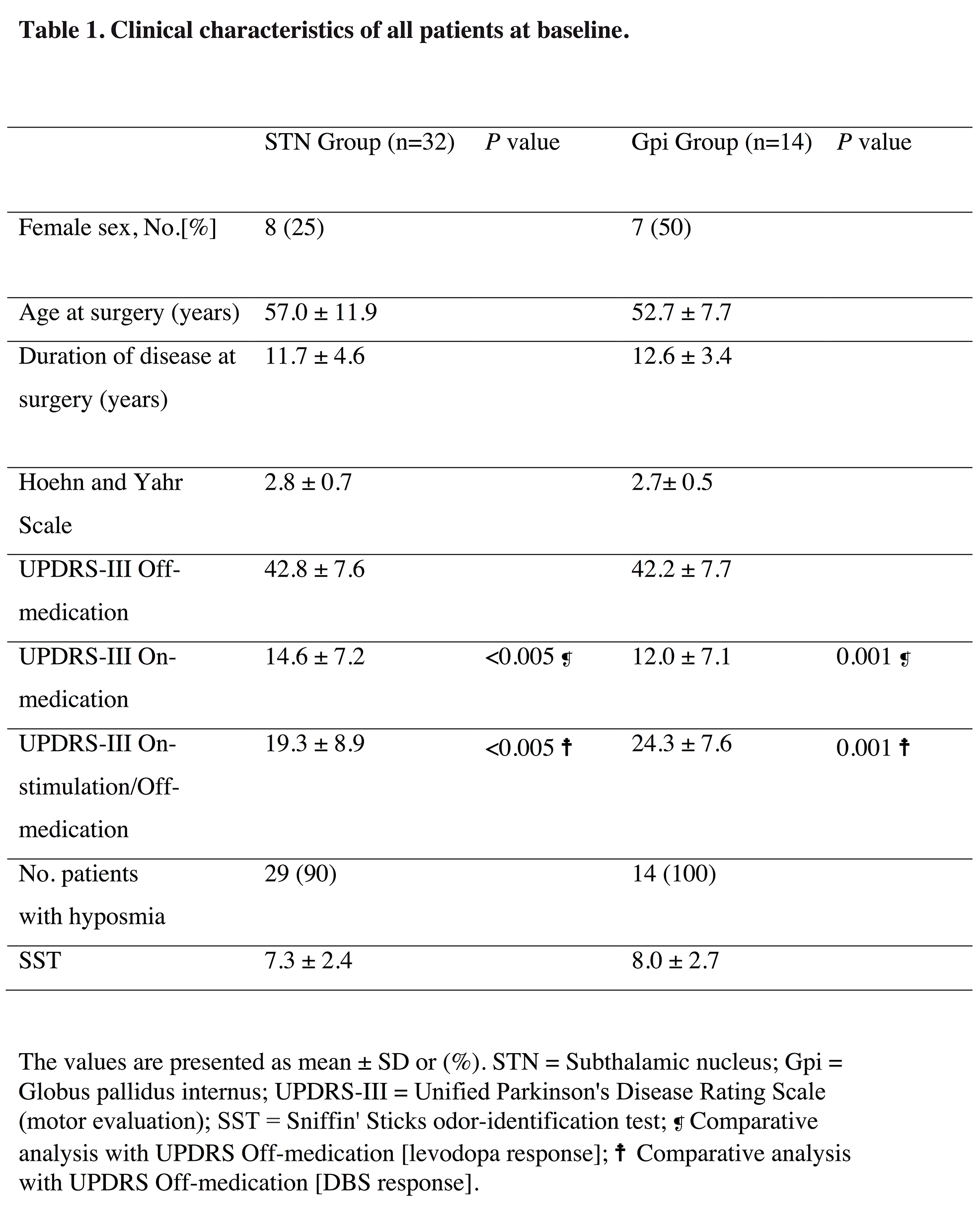Session Information
Date: Monday, June 5, 2017
Session Title: Surgical Therapy: Parkinson’s Disease
Session Time: 1:45pm-3:15pm
Location: Exhibit Hall C
Objective: The aim of this prospective study was to assess the impact of deep brain stimulation (DBS) on olfactory function in Parkinson’s disease (PD).
Background: Non-motor symptoms (NMS) in PD are very commom and can be present from the early course of the disease. Smell dysfunction is one of the most present NMS, seen in at least 90% of patients, and leads to high disability and lower quality of life (1,2).
Methods: Forty-six patients with PD and refractory motor symptoms were screened for subthalamic (STN) or globus pallidus internus (GPi) DBS. Patients were evaluated before and 1 year after surgery. Primary outcome was the change in olfactory function (Sniffin’ Sticks odor-identification test, SST) after surgery among the patients with hyposmia at baseline. Secondary outcomes included the relationship between motor outcomes and olfactory changes and the PET-SCAN analysis between subgroups with improvement vs no improvement of smell in the STN group.
Results: Baseline clinical characteristics are shown in [Table 1]. STN-DBS significantly improved SST after surgery when compared with baseline (preoperative SST, median 7.3 ± 2.4 vs postoperative, median 8.2 ± 2.1; p = 0.045) among 29/32 patients who presented hyposmia at baseline. The improvement in SST was positively correlated with the DBS response (r = 0.424; p = 0.035). There was no significantly change in SST after Gpi-DBS (preoperative SST, median 8.00 ± 2.35 vs postoperative, median 9.5 ± 2.5; p = 0.102) among 14/14 patients with hyposmia at baseline. The changes in SST was not correlated with motor outcomes in the Gpi group. The midbrain, cerebellum, anterior lobe, sub-gyral and right superior temporal gyrus were more activated in patients with SST improvement (p < 0.001) [Figure 1].
Conclusions: STN-DBS improves olfaction in PD patients. Motor improvement together with changes in the brain metabolism are the major determinants. Gpi-DBS showed no influence over olfactory function.
References: 1. Doty, R.L., Olfaction in Parkinson’s disease and related disorders. Neurobiol Dis, 2012. 46(3): p. 527-52.
2. Fonoff, E.T., et al., Pet findings in reversible improvement of olfactory dysfunction after STN stimulation in a Parkinson’s disease patient. Mov Disord, 2010. 25(14): p. 2466-8.
To cite this abstract in AMA style:
R. Cury, M. Carvalho, M.g. Santos Ghilardi, A. Estevo, A. de Paiva, F. Lopez, A. Coutinho, M. Teixeira, E. Barbosa, E. Fonoff. Effects of deep brain stimulation on olfactory function in Parkinson’s disease [abstract]. Mov Disord. 2017; 32 (suppl 2). https://www.mdsabstracts.org/abstract/effects-of-deep-brain-stimulation-on-olfactory-function-in-parkinsons-disease/. Accessed January 1, 2026.« Back to 2017 International Congress
MDS Abstracts - https://www.mdsabstracts.org/abstract/effects-of-deep-brain-stimulation-on-olfactory-function-in-parkinsons-disease/


